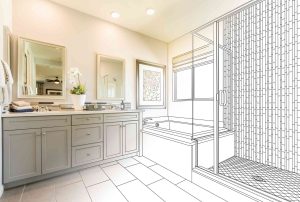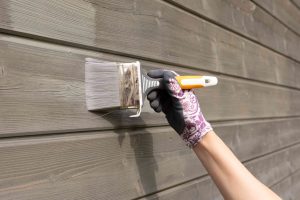The best way to finance home improvements is to pay cash, but that’s not always an option. After all, home repairs and renovations aren’t cheap. The median amount homeowners spent on home improvements in 2022 was $22,000, according to a recent survey on home renovation trends by home design website Houzz. Even relatively contained projects can be costly: Bankrate says the average U.S. homeowner spends about $8,600 on a new roof, and minor kitchen remodels can easily cost between $10,000 and $15,000. But with homeowners reluctant to give up the 3% mortgage rates they got during the pandemic housing boom, even pricier renovation projects seem mighty appealing for people who plan to stay put.
“Faced with shortages of housing stock and high interest rates, we’re seeing homeowners update their current home to make the space more functional for the long term,” said Liza Hausman, vice president of industry marketing at Houzz. “We’re also seeing an uptick in additions, with the vast majority of homeowners hiring professionals to achieve their goals.”
The good news is that several financing options exist for home improvement projects, including home equity loans, HELOCs, and the aptly named home improvement loan — a personal loan used to finance property repairs and renovations. More than a quarter of homeowners relied on secured home loans (such as home equity loans or HELOCs) last year to pay for projects that cost more than $50,000, according to Houzz — an increase of 2% over the previous year. Don’t want to use your home as collateral? Enter the home improvement loan.
Here’s how home improvement loans work and tips for getting one to fund your next project.
A home improvement loan is an unsecured loan that you can use to pay for various home repairs and renovations — such as a roof replacement, furnace/HVAC repairs, kitchen or bathroom remodel, deck addition, solar panel installation or landscaping. Loan amounts range from $3,000 to $100,000, which you repay with interest in monthly installments over one to five years.
Unlike a home equity loan or HELOC, a home improvement loan is not secured by your house (lenders may not even consider any home-related details). Instead, loan approval is contingent on factors like your credit and income.
A home improvement loan can be a good option if you don’t have enough equity to qualify for a home equity loan or HELOC — or you just don’t want to put your home up as collateral (equity is your home’s value minus your mortgage balance). They can also be a smart choice if you need to access funding quickly: The loan approval process is typically much faster than for equity-related loan options.
TIP: Starting in 2023, you can claim tax credits for some energy-efficient updates, including doors, windows, insulation, heat pumps, and air conditioners. Details about the Energy Efficient Home Improvement Credit and Residential Clean Energy Credit are available on the IRS website.
The best home improvement loan rates are available to borrowers with excellent credit, but that doesn’t mean you can’t qualify with a less favorable score.
According to Bankrate, home improvement loan rates currently range from about 6.5% to 36% — but the rate you get depends on factors like your credit score, annual income and debt-to-income (DTI) ratio. To get the best home improvement loan rates, compare at least three lenders, paying attention to the loan size, fees and terms each one offers. Here’s a sample of today’s average loan rates based on credit score:
Keep in mind that rates aren’t the only consideration: The best home improvement loans offer competitive interest rates, low fees, and manageable monthly payments.
You can use a home improvement loan or equity financing (a home equity loan or HELOC) to fund home repairs and renovations. Here’s how these three options compare:
TIP: Some government programs can help pay for home repairs and renovations. For example, an FHA-insured Title I loan (available from FHA-approved lenders) is a fixed-rate loan used for any improvements that make your home “basically more livable and useful” — including buying appliances, making energy-efficient upgrades, and improving accessibility for people with disabilities. Loans under $7,500 are typically unsecured, but larger loans use your home as collateral.
To further help you decide, here’s a rundown of the pros and cons of home improvement loans, home equity loans and HELOCs:
Home improvement loan pros and cons
Pros
– Upfront, lump-sum cash amount
– Fixed or variable interest rates
– Lower rates than credit cards
– Fast funding
– No foreclosure risk
Cons
– Highest rates among options
– Need good to excellent credit
– Short repayment period
– Larger monthly payments
– No tax benefits
Home equity loans pros and cons
Pros
– Upfront, lump-sum cash amount
– Fixed rate and monthly payment
– Lower rates than other options
– Longer repayment timeline
– Potential tax benefits
Cons
– Need enough home equity
– Foreclosure risk
– Need a stable, reliable income
– Need a strong credit score
– Appraisal and closing costs
HELOC pros and cons
Pros
– Lowest rates among options
– Revolving credit line
– Flexible renovation budget
– Delayed repayment period
– Potential tax benefits
Cons
– Need enough home equity
– Foreclosure risk
– Interest rate could rise
– Appraisal and closing costs
– Lender could freeze or reduce credit line
If you decide a home improvement loan is right for you, here are the basic steps for a successful application:
-
Decide how much you need: Calculate how much cash you need for your home repairs or renovations, factoring in fees the lender may deduct from your loan proceeds.
-
Check your credit score: As with other financing options, the higher your credit score, the better your rate. If you have poor credit, consider a co-signer to get a more favorable rate.
-
Get prequalified: You can check rates with multiple lenders without damaging your credit score.
-
Compare your options: Compare at least three lenders (including banks, credit unions and online lenders) to get the best home improvement loan rates and terms.
-
Complete the application process: Be ready to submit documents (e.g., a driver’s license, W-2s and paycheck stubs) to confirm your identity and financial situation.
Lenders offer various loans for home improvements that can come in handy when cash is tight. You can use these loans for home repairs and improvements or virtually anything else — though it’s best to stick to things that improve your home or your financial situation.
HELOC and Home Equity Loan FAQs
What are good home equity loan rates?
The best home equity loan rates can vary by lender. The average national rate for a home equity loan in June 2023 was between 7.52% and 9.81%. To find the most competitive rates, it’s best to do your research and shop around for the right lender for your needs.
What are the best HELOC rates?
As of June 2023, the average national rate for a home equity line of credit (HELOC) is between 7.79% and 9.78%. To get the best HELOC rates you will need to have a good credit score, a low debt-to-income ratio, a high enough income, and a reliable payment history. Even if all of these factors apply to you, it’s important to get quotes from at least a few lenders.
How does a HELOC work?
A HELOC is a revolving line of credit, which makes it similar to using a credit card. HELOCs usually come with a draw period of 10 years, followed by a repayment period. During the draw period, you can access funds as needed and repay only the interest as you go. Each time you make a payment, your credit line will replenish. During the repayment period, you’ll make larger payments that include both principal and interest. HELOCs tend to come with variable interest rates, but some lenders offer fixed payment options. A HELOC is a great option if you’re not sure how much you’ll need to borrow.
What is a fixed-rate HELOC?
A fixed-rate HELOC is considered a hybrid product because it combines a home equity loan’s fixed interest rate with a HELOC’s credit line. You can withdraw money (up to your credit limit) just like you would with a traditional HELOC. But unlike a variable HELOC, you lock in all or a portion of your balance at a fixed interest rate during the draw period. This can make it easier to plan and budget while protecting you from future interest rate hikes.
What is the best HELOC strategy?
Just because you can use a HELOC for anything doesn’t mean you should. After all, your house is on the line, and you risk losing it to foreclosure if you default on the payments. For this reason, the best HELOC strategy is to use the HELOC to boost your home’s value or strengthen your financial situation in some other way.
Is HELOC interest tax deductible?
The interest you pay on a HELOC can be tax-deductible — but not always. It all depends on what you use the funds for. According to the IRS, you can only deduct the interest you pay on a home equity loan or line of credit if “the borrowed funds are used to buy, build, or substantially improve the taxpayer’s home that secures the loan.” Here’s a closer look at the nuances involved in the question of whether heloc interest is tax-deductible.
How can I increase my home’s value?
If you’re researching home equity loans and HELOCs, you’ve probably started wondering how you can increase your home’s value. Check out our guide for tips, including investing in smart energy, replacing your roof, and refinishing hardwood floors.
How does a home equity loan work?
Once you’re approved for a home equity loan, your lender gives you the funds as an upfront lump sum. This makes home equity loans ideal for homeowners who want to borrow a specific amount for a major project or big one-time expense. To repay the loan, you make fixed monthly payments (with interest, of course) over a set term ranging from five to 30 years.
TIP: Remember that home equity loan payments are in addition to your usual mortgage payments, so budget accordingly. If you default on the loan payments, your lender can foreclose on your home.
How can I get a home equity loan?
While the process varies by lender, this is generally how to get a home equity loan:
-
Calculate how much equity you have in your home.
-
Decide how much you need to borrow.
-
Compare borrowing limits, features, terms, and customer reviews across lenders.
-
Get quotes from a handful of lenders that meet your needs.
-
Choose the lender with the lowest rate offer and submit a formal application, which will require a hard credit check.
-
Schedule an appraisal.
-
Wait for approval and close on your loan.
-
Begin repayment.
Editorial Disclosure: All articles are prepared by editorial staff and contributors. Opinions expressed therein are solely those of the editorial team and have not been reviewed or approved by any advertiser. The information, including rates and fees, presented in this article is accurate as of the date of the publish. Check the lender’s website for the most current information.
This article was originally published on SFGate.com and reviewed by Lauren Williamson, who serves as Financial and Home Services Editor for the Hearst E-Commerce team. Email her at [email protected].
Read the full article here





















